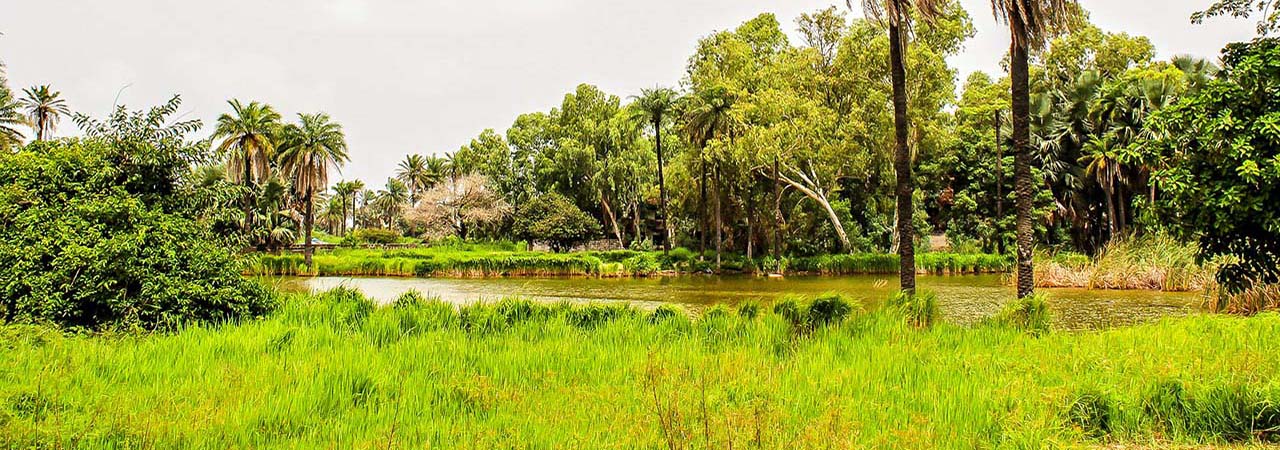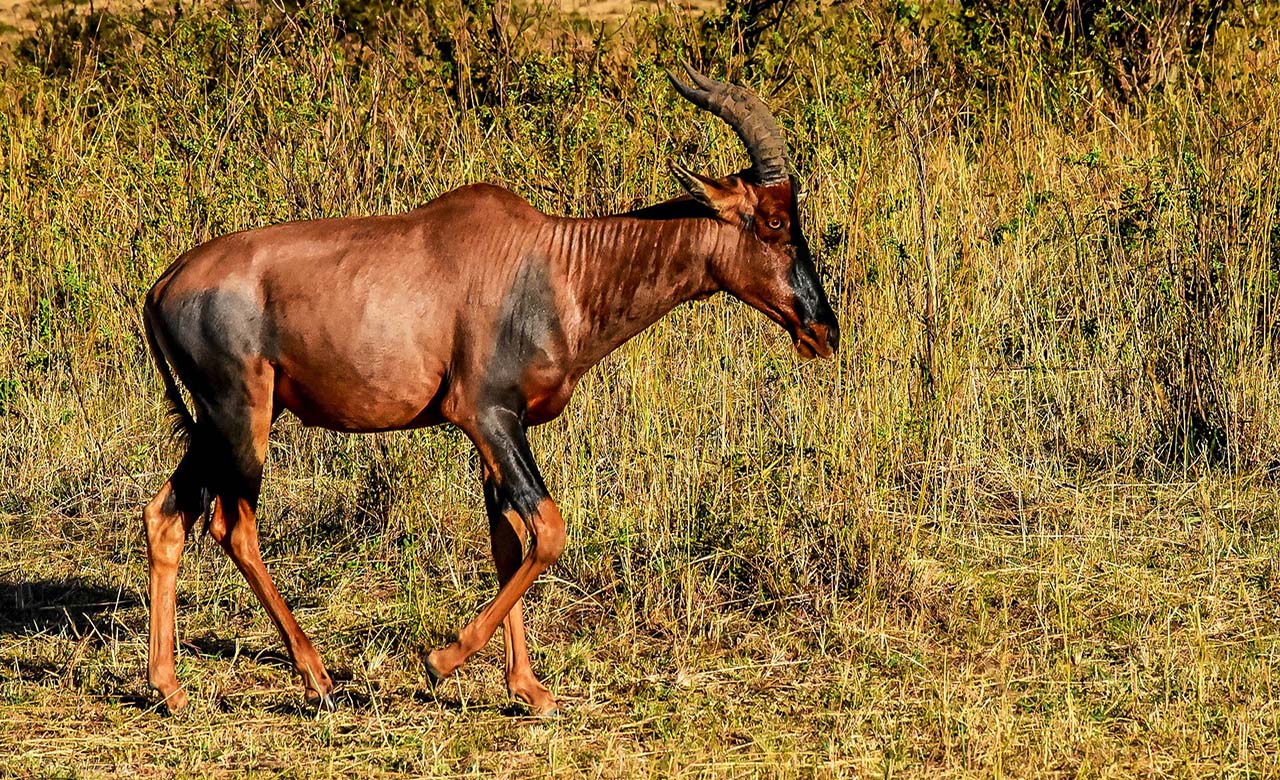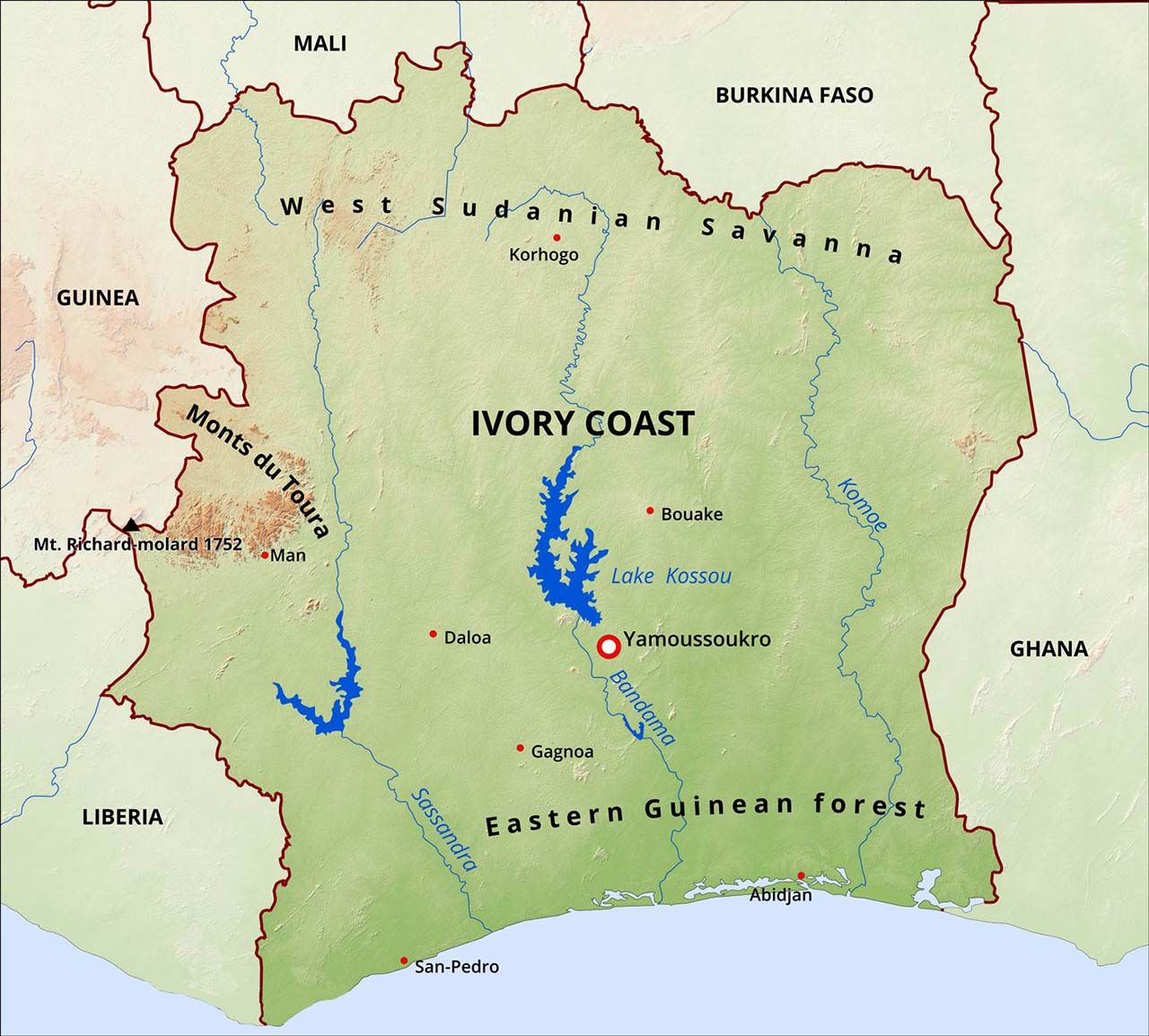Climate and Geography
The Ivorian Climate


Côte d’Ivoire is located in the intertropical zone with two major climatic domains. We can distinguish between the equatorial humid climate in the south and the tropical savannah climate in the north.
The humid equatorial climate

This climate zone is characterized by high rainfall and temperatures of about 30 ° C, in a very humid atmosphere. This climatic region has four seasons: the big rainy season that goes from May to July, the small dry season that goes from August to September, the small rainy season that goes from October to November and the big dry season that goes from December to April.
The tropical savannah climate

This climate zone is characterized by a dry tropical climate, with temperatures ranging between 28 ° and 37 ° C and an annual rainfall of 1,200 mm³. This climate region also experiences four seasons: two rainy seasons and two dry seasons. The long rainy season that goes from April to mid-July, with frequent rainfall and many thunderstorms, the short dry season that runs from mid-July to September, where the sky remains overcast, the short rainy season that goes from September to November with some small rainfall and the long dry season that goes from December to March, marked by the trade winds of the north.
The vegetation

Because of the two climatic zones, Côte d’Ivoire is divided into two vegetation zones: the forest in the south and the savannah in the northern part. The north is covered by savannah and is characterized by large areas of grassland and sparse trees extending to the Sahel. The south is covered with forest that covers almost all of the southern part of the country. This part of the country has declined sharply due to excessive forest exploitation.
Geography

With an estimated population of 25,117,809 inhabitants, Côte d’Ivoire is a country in West Africa, which covers an area of 322,462 km². It is located in the northern hemisphere between the Tropic of Cancer and Ecuador and overlooks the Atlantic Ocean in the Gulf of Guinea. Generally, Côte d’Ivoire has a gentle terrain consisting of plains and plateaus, sand cliffs and lagoons. In some parts of the country, the plateaus rise to over 1000 m such as Mount Nimba (1,752 m) and Mount Tonkou (1189 km) and many others. Côte d’Ivoire shares 3 110 kilometers of common borders with five countries: Liberia (716 km border) and Guinea (610 km border) to the west; Mali (532 km of border) and Burkina Faso (584 km of border) in the North; Ghana (668 km border) in the East and a maritime coast of about 515 km which opens on to the Atlantic Ocean.
